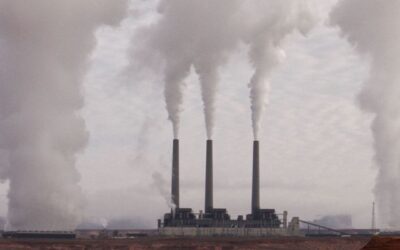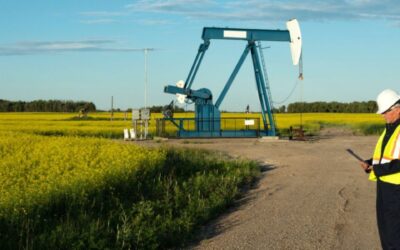Greenhouse gas emissions from oil and gas production in Canada are out of sync with a net zero pathway. This puts Canada at risk of missing its climate goals and falling behind in the global clean energy transition.
Between 2005 and 2019, emissions from the oil and gas sector rose by almost 20 per cent. And they are still rising. Canada’s 2030 Emissions Reduction Plan shows the sector must make deep and rapid emissions reductions: it needs to get to 31 per cent below 2005 levels by 2030.
Canada must also consider the future of oil and gas production and the risk of stranded assets. The global transition to a low-carbon economy is underway, with demand for fossil fuels set to peak this decade and then decline. As the transition gains momentum, international demand for oil and gas could fall dramatically.
Current policies are not enough to address these risks. To get Canada on an emissions reduction pathway, align the oil and gas sector with that pathway, and keep Canada competitive in the global clean energy transition, all orders of government will need to implement stringent, well-designed policies for the oil and gas sector such as an emissions cap—and quickly.
Aligning the oil and gas sector with a net zero pathway
Canada has committed to reduce greenhouse gas emissions by 440 megatonnes by 2030 en route to net zero by 2050. We won’t meet our climate targets unless the oil and gas sector significantly reduces its emissions, in line with the rest of the economy.
The Climate Institute’s modelling of future scenarios shows that by 2030, without further climate policies, business as usual would put oil and gas emissions 6 per cent above 2021 levels and 15 per cent above 2005 levels.
In short: current policies are not strong enough to reduce emissions in the oil and gas sector. To meet the targets in Canada’s Emissions Reduction Plan, emissions need to fall 31 per cent below 2021 levels.
Well-designed climate policy can help and the Canadian Climate Institute’s discussion paper identifies four specific policies that can set the oil and gas sector on a path to a competitive future consistent with a net zero Canada and a net zero world.
Keeping Canada competitive in the clean energy transition
Long-term demand for oil and gas is declining as global efforts to reduce greenhouse gas emissions accelerate. In the International Energy Agency’s net zero scenario, global oil demand declines 75 per cent by 2050 and gas demand declines 55 per cent. While recent events including the war in Ukraine have seen an increase in demand for Canada’s oil and gas, this will be short-lived. In fact, the war is accelerating the transition to a low-carbon future: in 2022 the European Commission announced a €210 billion plan to help the European Union accelerate its transition to clean energy and reduce its dependence on Russian oil. The US Inflation Reduction act is also reshaping the global climate policy landscape, pressuring governments to consider the implications for their own climate policies and their economic competitiveness in a low-carbon world.
Worldwide, shifts in technology, markets, and policy are underway, which will further decrease demand for oil and gas production as will new climate policies in Canada, for example the recently released draft Clean Electricity Regulations.
The fall in global demand means that the future of the oil and gas sector in Canada looks very different than it does today. The question is how can governments support the sector through the transition, while protecting Canada’s economy and global competitiveness. Our discussion paper on Transition Pathways for Canada’s Oil and Gas Sector shows that there are a number of the sector can decarbonize and develop new net zero products. Stringent climate policies for the sector can also help, including an oil and gas emissions cap and strong methane regulations.
There are other steps all orders of government can take to help the sector transition and protect Canada’s economy and global competitiveness. For example, a made-in-Canada transition investment taxonomy could help ensure public and private investment flows to sectors that have a clear decarbonization path, that won’t result in stranded assets, and that won’t lock-in future emissions from highly polluting projects that are not aligned with global climate targets. As our report “Cutting to the Chase on Fossil Fuel Subsidies” shows every dollar spent on infrastructure that is incompatible with pathways to net zero will cost Canadians more in the long run.
Key takeaway
Rising emissions from oil and gas production in Canada are putting the country at risk of failing to meet legislated climate targets and getting left behind in the global clean energy transition. But strong, well-designed policies can address both these risks and set Canada up for success.
Read our discussion paper on Canada’s oil and gas sector, the road to net zero and regional fairness.









